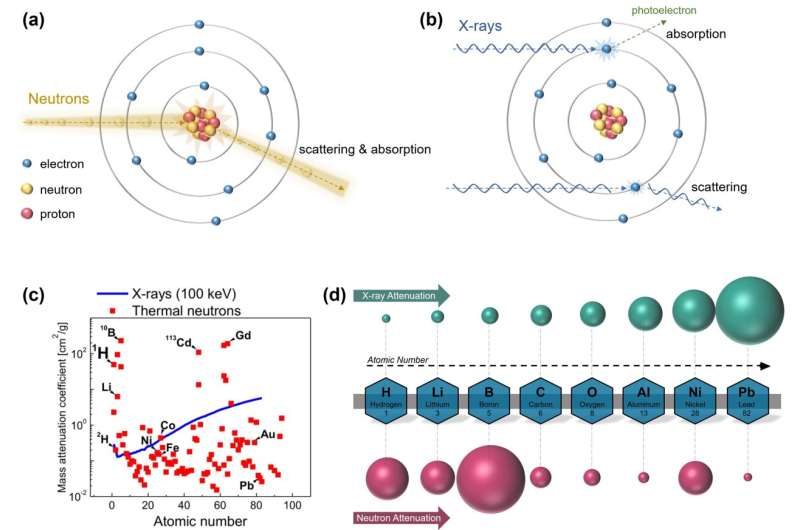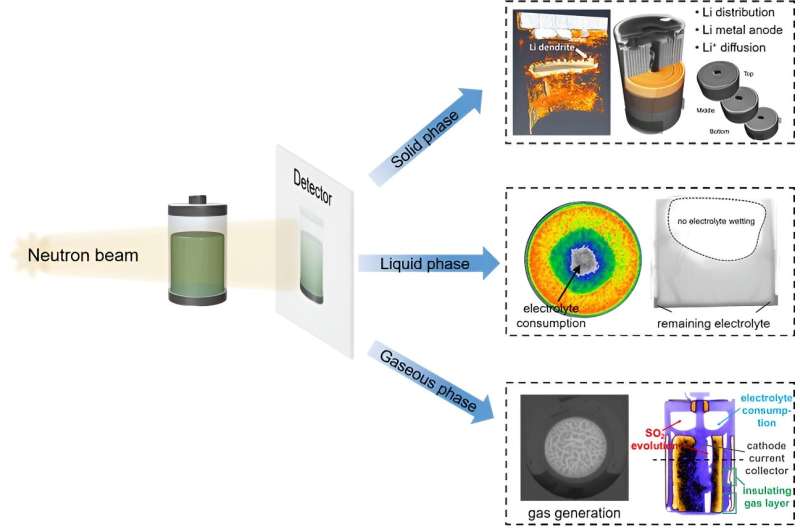This article has been reviewed according to Science X's editorial process and policies. Editors have highlighted the following attributes while ensuring the content's credibility:
fact-checked
trusted source
proofread
Neutron imaging offers unique perspective for observation of different states of matter within lithium batteries

Lithium batteries, recognized as vital energy storage solutions, have become essential to contemporary living. Nevertheless, as modern industry advances rapidly, lithium batteries are challenged to keep pace with demands for enhanced energy density, extended cycle life, and heightened safety performance.
To address these pressing issues, advanced characterization techniques must be employed to delve into the internal evolution mechanisms of lithium batteries. This in-depth analysis aims to furnish a theoretical foundation for the ongoing development of lithium battery technology.
Electrically neutral neutrons possess remarkable penetrating capabilities and a pronounced sensitivity to light elements, particularly hydrogen and lithium, as found in lithium batteries. This inherent quality bestows neutron imaging with a distinctive advantage when observing the internal state distribution within lithium batteries. In this article, researchers present a comprehensive survey of the applications of neutron imaging technology in characterizing lithium batteries across solid, liquid, and gas phases.
In the realm of the solid phase, neutron imaging capitalizes on its sensitivity to lithium elements to analyze the lithium concentration in electrodes, thus enabling the determination of the battery's state of charge. Moreover, it offers invaluable insights into issues such as in-situ observation of lithium dendrite growth, volume fluctuations, uneven deposition, and other concerns related to lithium metal anodes, making up for the limitations of X-ray imaging in this domain.

Transitioning to the liquid phase, neutron imaging can be used to analyze the infiltration process of liquid electrolytes inside the battery and investigate issues related to electrolyte consumption during battery cycling. In the context of the gas phase, neutron imaging allows in-situ observation of gas production resulting from internal side reactions in the battery.
The article also delves into the challenges encountered by various battery technologies, including lithium-metal batteries, solid-state batteries, lithium-sulfur batteries, and lithium-oxygen batteries. It underscores the untapped potential of neutron imaging in advancing the development of these emerging battery technologies.
The study is published in the journal National Science Review.
More information: Lei Gao et al, Application of neutron imaging in observing various states of matter inside lithium batteries, National Science Review (2023). DOI: 10.1093/nsr/nwad238


















